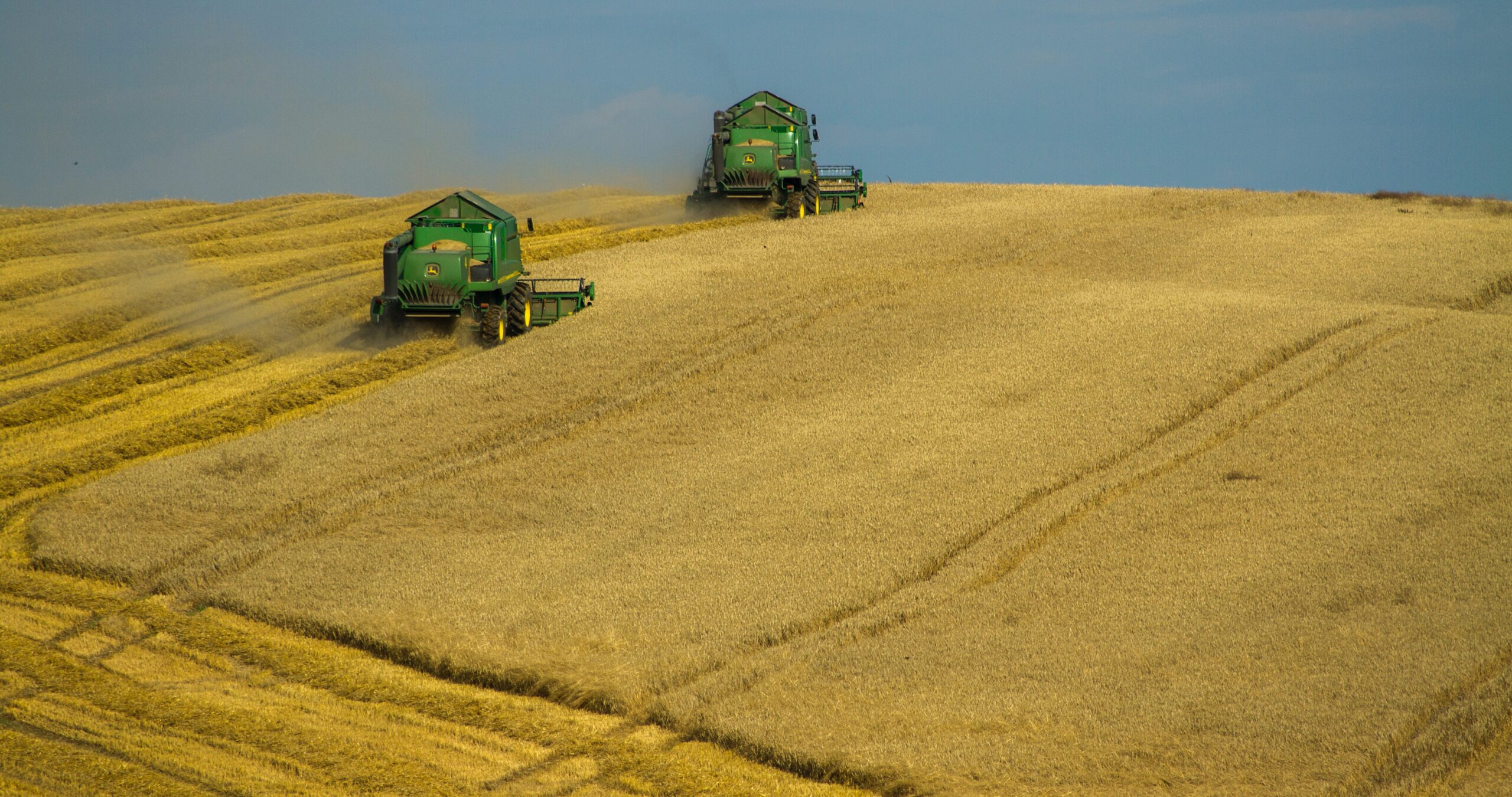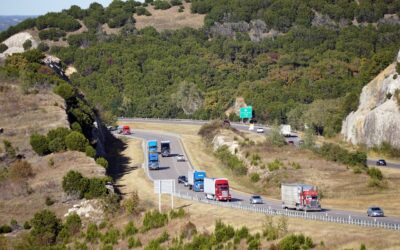Imagine this: you just found a used New Holland combine in great condition for a reasonable price. And it’s ahead of the season, so you’ll be able to tackle your crops with it when the time comes. The only snag in your plan is that the combine is in the middle of Saskatchewan, and you’re located in Southern Alberta. How do you ship a combine from across provinces when you don’t own a truck and trailer large enough to haul a combine? You want to put an offer in on the machine, but you also want to get an idea of how much it will cost to transport it. That’s where a professional heavy machine shipping company, such as Trusted Dispatch, comes into play.
How to Ship Agricultural Equipment
The agricultural equipment used to get the job done on Canadian farms can range from massive combines to mid-size tractors to smaller implements. Whenever the time comes to acquire new machinery, there are multiple options open to Canadian farmers, including purchasing new, secondhand, or buying from an auction. You’re not limited to your immediate community with transportation companies, such as Trusted Dispatch. You could purchase equipment from anywhere across North America and find a driver on that route to transport it home.
Getting a Shipping Quote Is Easy
You can start by getting your free instant quote in three quick steps. Tell us the pick-up location of the machine, the location of the drop-off, and the make and model of the equipment. You’ll instantly get a free quote so you can make your buying decisions quicker and easier. Once you make your purchase, you can post your load requirements on our dashboard to be matched with an available driver.
Connecting With Professional Drivers
Agricultural equipment is valuable, so when you want to ship it over long distances, you want to ensure you hire an experienced, professional driver. There is no room to cut corners with safety or security when shipping long, heavy hauls. The professional drivers who use Trusted Dispatch will always take the time to safely load your equipment and machines onto the appropriate trailer based on your load information. Transporting your load efficiently and securely is always the top priority.
Understanding Trailer Types Used for Agricultural Equipment
The type of trailer required to transport your machine will depend on the specs. Certain trailer styles can only bear so much weight before additional axels are necessary. The height of your machine will also depend on the type of trailer used to comply with road dimensions, including power lines, overpasses, and bridges. Understanding how the weight of your haul affects the trailer type required to move it and the price of fuel will help you understand how a fair shipping price is determined.
Flatbed or Highboy Trailers
This style of trailer is commonly seen on Canadian roads and highways. The deck can span between 48′ and 53′ in length and a standard 8’6″ in width. This trailer is called a “highboy” trailer because the flatbed is 5′ in height. These trailers are primarily used for hauling material, equipment, and machinery weighing 48,000 lbs.
Step Deck or Single Drop Trailers
This trailer style is also common on Canadian roads and measures anywhere between 35′ and 63′ in length. The neck of the top deck usually measures 11′ in length, with the lower deck measuring around 37′ to 42′ or longer. The width of a step-deck is the same as a flatbed, at 8’6″. The height of the bottom deck is only 42,” and the top deck is 60″.
These trailers can accommodate more weight by adding additional axels for greater weight distribution. Because of this, the weight distribution can range between 43,000 lbs to 62,000 lbs. This trailer type is ideal for shipping large farm machines because they are lower to the ground and are easy to load. If the trailer doesn’t have a built-in ramp, most drivers will carry their own.
Double Drop or Lowboy Trailers
This style of trailer has two levels. The upper deck can reach between 6′ and 10′ while the lower tier can reach between 30′ and 32′ in length. Double drop trailers are the standard 8’6″ in width, while the height from the ground sits at 18″ to the lower deck and 24″ to the upper deck. These trailers are also recognizable for their beavertail ramps, which attach at the back and are stored vertically during transport.
The lowboy trailer can also be adapted to haul heavier weights of machinery by adding additional axels for greater weight distribution. These trailers can accommodate between 43,000 lbs and 58,000 lbs, making them ideal for shipping combines and other large agricultural equipment.
Three Essential Details Every Shipping Company Needs to Know
There are several steps involved with arranging farm equipment transport. However, there are three essential details every driver and shipping company needs to know. Those are the specifications of the make and model that requires transportation services.
Weight
A driver needs to know the weight of the equipment getting shipped because it will determine the type of trailer and number of axels required to follow both safety standards and the laws of the road. A professional driver needs to know in advance what equipment they need for the job.
The driver will also determine their route based on the weight of the load. Certain highways and urban roads have weight restrictions that drivers must follow according to the laws of the road from a safety point of view and infrastructure protection viewpoint.
Width and Height
The width of a shipment will determine whether or not the load is oversized. Oversized shipments require additional planning, including specialized markings, route planning, and sometimes other permits or the arrangement of pilot vehicles.
The height of a piece of machinery is also crucial for the planning process for several reasons. The first is to determine the type of trailer the driver will need to use. Another reason is to plan appropriate routes of transportation. An exceptionally tall shipment may not fit under powerlines, underpasses, or through tunnels.
Destination
Before a shipping company can offer you a free quote, they must know the distance the load is going to travel. Providing the pick-up location and drop-off destination is an essential piece of the process. Your quote will be affected by the distance the route will cover and the destination.
With Trusted Dispatch, we can connect you with drivers that transport across the Canada-United States border. Many of our professional drivers have experience in cross-border transport procedures and routes. We also recommend working with a customs broker to ensure your paperwork is correct and efficient. We have a list of trusted customs brokers that we recommend helping you save time.
Farm Equipment Shipping Costs
Shipping charges for transporting farm equipment are primarily determined by the size, weight, and distance the shipment needs to travel. In addition to those essential factors, the price of fuel, pre-planning for oversized loads, or special permits, including cross-border transport, will also impact the cost of your shipment. At Trusted Dispatch, you’ll always receive a fair price for your load that ensures equitable compensation for the professional driver without the extra charges associated with brokers and intermediaries.
Getting your instant free shipment quote with Trusted Dispatch is easy using our website or mobile app. Start by entering your pick-up and drop-off locations, then the specs for your equipment, and you’ll instantly get your free quote.
Top Agricultural Machinery That Gets Shipped
Heavy machinery requires the services of professional heavy transport. The dimensions and specs of the machinery will determine the type of trailer that is required for the haul. At Trusted Dispatch, we see all types of farm equipment posted on our load board, with the most common machines being tractors, swathers, and combine harvesters.
Tractors
The tractor is the most versatile and valuable piece of equipment on a farm. It literally is your workhorse or team of workhorses instead. Although tractors were originally designed to make tilling efforts easier and faster to complete, tractors perform various agricultural functions with implements. The superior traction at slow speeds makes your tractor the most valuable player on your farm. When you require cross-province or cross-border shipping for tractors, Trusted Dispatch is here to help. Not only can we haul your tractor, but we can also find drivers who can accommodate farming implements at the same time.
Swathers
In North America, swathers can range from smaller models that are pulled by tractors or large, self-propelled machines that tackle larger crop areas. The swather improves the process of drying and reducing moisture in a crop so that it can be harvested quicker and stored better. You can find the exact specs for your machine by using our powerful Specs Tool to enter the make and model for your swather.
Combine Harvesters
If you’ve ever seen a combine harvester being transported on the highway, you’ve probably marveled at the massive size of these machines. These powerful pieces of agricultural equipment combine four separate operations into one efficient process, including reaping, threshing, gathering, and winnowing. Canadian farmers use combine harvesters on wheat, oats, rye, barley, soybeans, flax or linseed, sunflowers, and canola.
Types of Farm Implements
On your farm, you need more than just a tractor to get a variety of jobs done. Various farming implements are useful at all stages of the growing season. When you’re shipping a tractor or other farm machine, you might also be shipping implements or attachments along with it. On the Trusted Dispatch load board, we’ve seen everything from ploughs to stone pickers to planters get shipped.
Plough
The plough, or some form of a plough has been in existence since humans began farming. It’s no wonder it is an essential implement on any farm in Canada. If you’re purchasing a new or used tractor, you may also be purchasing a new plough that goes with it. Our easy-to-use Specs Tool makes it easy to list the items you need to be shipped, including implements.
Stone Picker
A stone picker is a genius tool that runs through the top layer of soil like a sieve, separating the big stones from the rich topsoil. If your hay balers and combines are prone to leave behind stones, you might want to consider investing in a stone picker before the seeding season beings.
Roller
Tractor-pulled rollers help flatten out fields to help with weed control and easier harvesting. This heavy implement requires professional equipment for transport, which our drivers have. If you’re shipping a water-filled roller, it’s crucial to ensure the water is drained before the day of your pick-up.
Planter
Various models of farm implements have different features that impact how the equipment needs to be shipped. When it comes to modern farming, implements such as the planter have revolutionized our capacity to seed fields, and the John Deere DB120 is a prime example of this. Having 48rows to seed fields more efficiently, this machine clocks in at about 37 metres wide. However, being a John Deere, this planter does fold in on itself for a compact transportation. This is an example of why inputting an accurate make and model for your shipment helps our drivers be prepared for the pickup.
No-Till Planter
In Western Canada, no-till seeding is growing in popularity, especially as certain agricultural belts are getting dryer each season. These machines run much smaller in specs than traditional tillage planters. The no-till planter has a disk opener at the front of the unit and cuts into the crop residue to allow clear planting into the soil without tilling.
Combine Shipping and Other Farm Equipment Transport
If you’re in need of transportation services for your farm equipment and agricultural machinery, Trusted Dispatch is your go-to company. Customers love our easy-to-use system that provides you a free quote instantly when you enter your shipment pick-up and drop-off locations and your machine’s dimensions. It’s that simple. And our customer service representative is available to answer questions and provide assistance when you need it. Give our office a call or use the chat option on our website.





